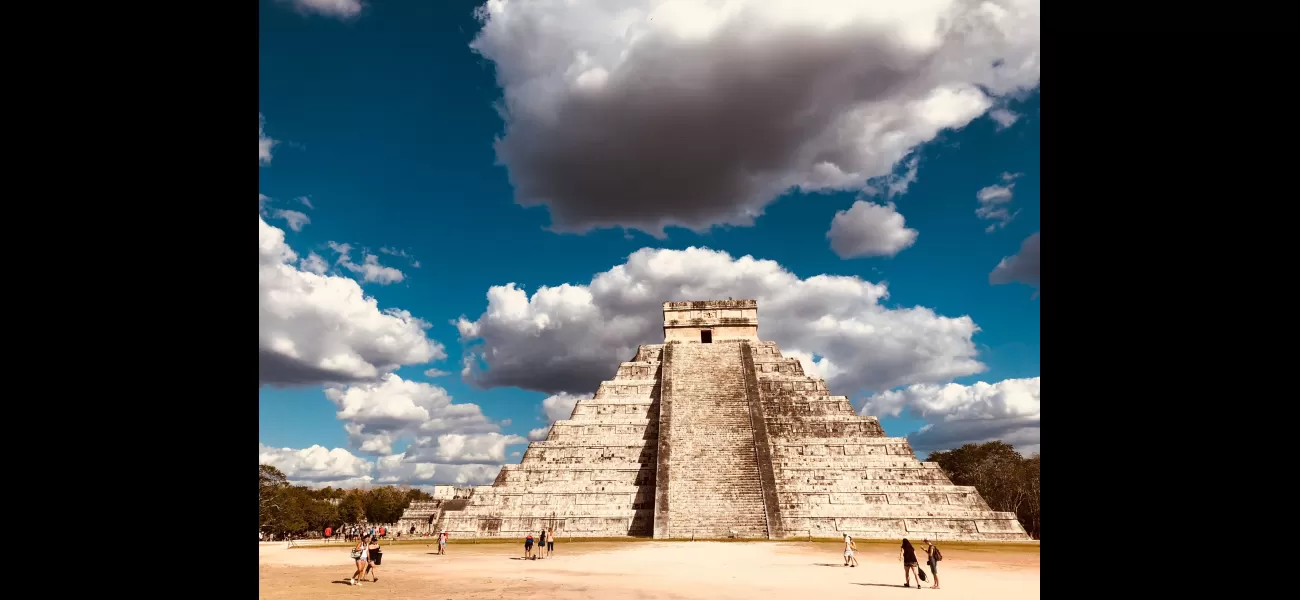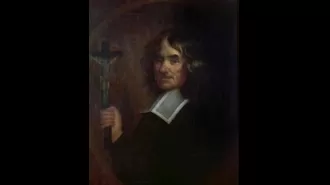Mayan twins sacrificed as 'special' children.
They ate similar foods.
June 13th 2024.

Chichén Itzá, a prominent archaeological site in North America, was once a hub of political power before the Spanish arrived. Among its many striking structures, El Castillo stands tall as one of the largest and most well-known temples, decorated with intricate feathered serpent designs.
Recently, a group of scientists used advanced technology to analyze human remains found in Chichén Itzá. What they discovered shed new light on the ancient Mayan culture. It turns out that the infamous temple was a site of human sacrifice, particularly of twin boys.
Previous theories suggested that girls or young women were the main victims of these rituals, but the latest findings published in the journal Nature have disproved this. Past evidence of ritual killings, both in physical remains and monumental art, had already been uncovered at Chichén Itzá. However, it wasn't until the early 20th century when the discovery of hundreds of remains in the Sacred Cenote and a massive tzompantli (skull rack) revealed the true extent of human sacrifice at the site.
Despite the widespread belief that the sacrificed individuals were primarily female, it was difficult to determine the sex of the remains, especially for juvenile skeletons. But after conducting a thorough genetic analysis, it was revealed that the majority of the victims were actually boys. In fact, a subterranean chamber called a chultún was discovered to contain the scattered remains of more than 100 children, all of whom were boys.
Further investigation showed that these children were from local Maya populations and that many of them were closely related to each other. In fact, two pairs of identical twins were identified among the remains. This suggests that related male children were selected in pairs for ritual activities, which aligns with the Mayan belief that twins held a special place in their origin stories and spiritual life.
In the sacred K'iche' Mayan Book of Council, known as the Popol Vuh, twin sacrifice is a central theme. According to the book, the twin brothers Hun Hunahpu and Vucub Hunahpu were sacrificed by the gods after losing a ballgame. Their twin sons, known as the Hero Twins Hunahpu and Xbalanque, then went on to avenge their fathers and undergo cycles of sacrifice and resurrection in order to outsmart the gods of the underworld.
The interment of twins within the chultún at Chichén Itzá may have been a way to honor these mythological figures and their sacrifices. The subterranean chamber was viewed as a connection to the underworld, adding to the significance of the ritual. This discovery adds a new layer of understanding to the ancient Mayan culture and their beliefs surrounding twin sacrifice.
In conclusion, Chichén Itzá is not only a magnificent archaeological site but also a window into the beliefs and practices of the ancient Maya. The recent findings of twin sacrifices at the site have shed new light on the significance of twins in their culture and the role of subterranean structures in their spiritual life.
Recently, a group of scientists used advanced technology to analyze human remains found in Chichén Itzá. What they discovered shed new light on the ancient Mayan culture. It turns out that the infamous temple was a site of human sacrifice, particularly of twin boys.
Previous theories suggested that girls or young women were the main victims of these rituals, but the latest findings published in the journal Nature have disproved this. Past evidence of ritual killings, both in physical remains and monumental art, had already been uncovered at Chichén Itzá. However, it wasn't until the early 20th century when the discovery of hundreds of remains in the Sacred Cenote and a massive tzompantli (skull rack) revealed the true extent of human sacrifice at the site.
Despite the widespread belief that the sacrificed individuals were primarily female, it was difficult to determine the sex of the remains, especially for juvenile skeletons. But after conducting a thorough genetic analysis, it was revealed that the majority of the victims were actually boys. In fact, a subterranean chamber called a chultún was discovered to contain the scattered remains of more than 100 children, all of whom were boys.
Further investigation showed that these children were from local Maya populations and that many of them were closely related to each other. In fact, two pairs of identical twins were identified among the remains. This suggests that related male children were selected in pairs for ritual activities, which aligns with the Mayan belief that twins held a special place in their origin stories and spiritual life.
In the sacred K'iche' Mayan Book of Council, known as the Popol Vuh, twin sacrifice is a central theme. According to the book, the twin brothers Hun Hunahpu and Vucub Hunahpu were sacrificed by the gods after losing a ballgame. Their twin sons, known as the Hero Twins Hunahpu and Xbalanque, then went on to avenge their fathers and undergo cycles of sacrifice and resurrection in order to outsmart the gods of the underworld.
The interment of twins within the chultún at Chichén Itzá may have been a way to honor these mythological figures and their sacrifices. The subterranean chamber was viewed as a connection to the underworld, adding to the significance of the ritual. This discovery adds a new layer of understanding to the ancient Mayan culture and their beliefs surrounding twin sacrifice.
In conclusion, Chichén Itzá is not only a magnificent archaeological site but also a window into the beliefs and practices of the ancient Maya. The recent findings of twin sacrifices at the site have shed new light on the significance of twins in their culture and the role of subterranean structures in their spiritual life.
[This article has been trending online recently and has been generated with AI. Your feed is customized.]
[Generative AI is experimental.]
0
0
Submit Comment





